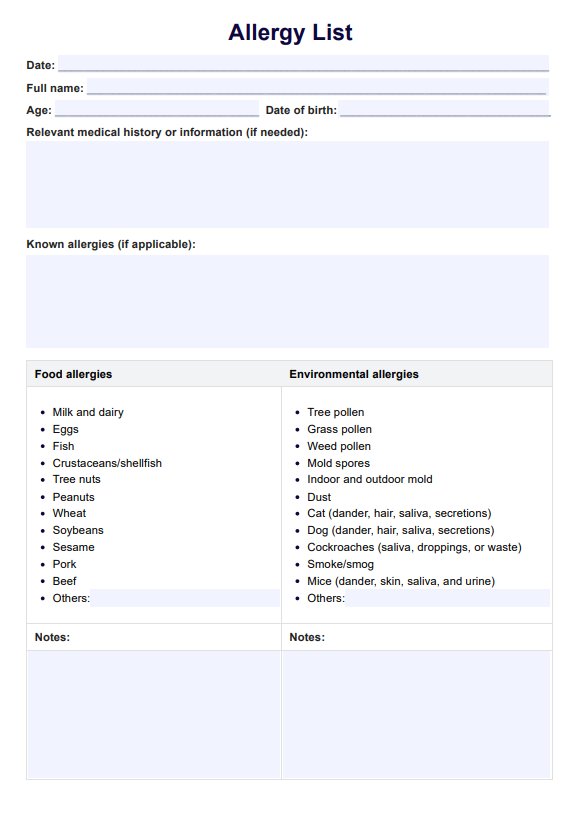Often. Some people are born with specific allergies. Sometimes, they aren’t aware of it. If they are exposed to allergens that trigger allergies they didn’t know they had, they can update their Allergy List. It’s also possible to gain a new allergy over time. If that happens, it’s best to update one's Allergy List.

Allergy List
Download our Allergy List as a reference and information-gathering tool to provide appropriate patient care.
Allergy List Template
Commonly asked questions
Besides the person with the allergies, their loved ones, and close friends, healthcare professionals, educational staff (if the person with allergies is still a student), colleagues (if the person is part of the workforce), caregivers, emergency responders, restaurant staff, and airport personnel, should have access to these lists if possible.
While we are familiar with the most common food allergens, it’s best to indicate non-food allergies. Patients may never know when they might be exposed to a non-food allergen. By encouraging patients to show all their known allergies, healthcare providers can draft a prevention and management plan for them.
EHR and practice management software
Get started for free
*No credit card required
Free
$0/usd
Unlimited clients
Telehealth
1GB of storage
Client portal text
Automated billing and online payments











